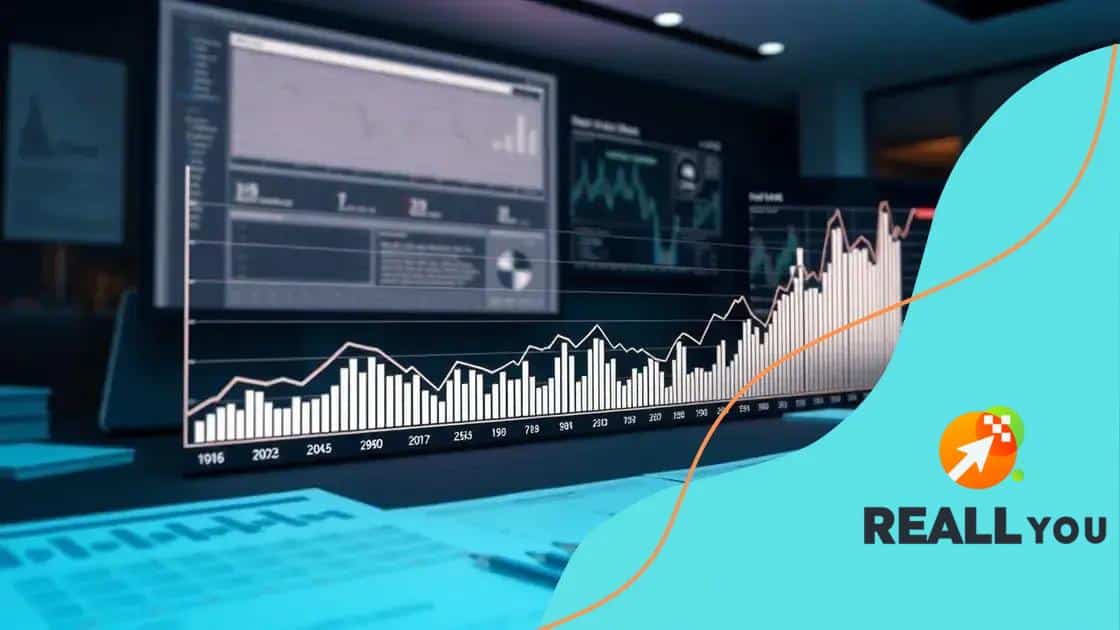Fed rate hike discussions: what you need to know

Anúncios
Fed rate hike discussions focus on how changes in interest rates by the Federal Reserve affect consumer borrowing, spending, and overall economic growth, requiring adaptive strategies from both individuals and businesses.
Fed rate hike discussions are more than just financial jargon; they affect everyone. Have you ever wondered how these decisions influence your wallet and the wider economy? Let’s explore their significance.
Anúncios
Understanding the Fed’s role in the economy
Understanding the Fed’s role in the economy is crucial for anyone wanting to grasp the financial landscape. The Federal Reserve, or the Fed, plays a significant part in shaping economic policies that impact our daily lives.
Anúncios
The Fed has several functions, but one of its primary roles is to manage the country’s monetary policy. This involves influencing interest rates and controlling money supply to promote maximum employment and stable prices.
What the Fed Does
The Fed’s actions can either stimulate or cool down the economy. By changing interest rates, it impacts how much we pay for loans and how much interest we earn on savings. When rates are low, borrowing becomes cheaper, encouraging spending and investment.
- Sets interest rates through the Federal Open Market Committee (FOMC).
- Regulates and supervises banks to ensure they operate safely.
- Provides financial services to depository institutions, the federal government, and foreign institutions.
- Maintains stability in the financial system to prevent crises.
Another crucial aspect of the Fed is its role in providing liquidity to the economy during times of crisis. For instance, in the 2008 financial crisis, the Fed stepped in to support struggling banks and provide the necessary funds to prevent a total economic collapse. This action helped maintain confidence in the financial system.
Additionally, the Fed analyzes economic conditions and forecasts future trends. This research informs its policy decisions and helps guide market expectations. Investors and businesses closely monitor the Fed’s moves as they can sway financial markets and economic outlooks significantly.
Impact on Everyday Life
The decisions made by the Fed can have immediate effects on your personal finances. For example, when the Fed raises rates, you may notice higher borrowing costs for loans, credit cards, and mortgages. Conversely, when rates drop, it can make loans more affordable and encourage consumer spending.
- Higher rates can slow down economic growth.
- Lower rates can stimulate spending and investment.
- Fed policies influence inflation rates, affecting purchasing power.
- Understanding these dynamics helps individuals and businesses plan better.
Historical perspective on rate hikes

Looking at the historical perspective on rate hikes helps us understand how these changes have shaped the U.S. economy. Over the years, the Federal Reserve has made crucial decisions regarding interest rates based on economic conditions, inflation, and employment levels.
The first notable rate hike occurred in the late 1970s when inflation surged dramatically. At that time, the Fed raised interest rates to combat rising prices, which had broad effects on borrowing and spending. Understanding these trends is essential for predicting future economic shifts.
Key Historical Hikes
In the 1980s, the Fed, under Chairman Paul Volcker, implemented aggressive rate hikes to tackle double-digit inflation. Rates peaked in 1981 at over 20%. This approach led to a recession but ultimately stabilized the economy for years to come.
- The late 1990s saw rates lowered to promote economic growth.
- After the dot-com bubble burst, rates were significantly cut to help recovery.
- The 2008 financial crisis led to near-zero rates to revive economic growth.
- Recently, rate hikes were implemented to counteract rising inflation post-pandemic.
During the 2000s, the Fed gradually raised rates again as the economy recovered. These adjustments reflected the ongoing struggle to balance growth and inflation. Each rate hike has consequences, influencing everything from consumer spending to business investment.
In recent years, we have experienced a volatile economy influenced by global events and domestic policy changes. Rate hikes have become a hot topic as the Fed aims to manage inflation while also fostering employment, reflecting an ongoing challenge in economic policy.
Effect on the Economy
Rate hikes can lead to various outcomes for the economy. For instance, higher interest rates often result in increased costs for loans, impacting consumers and businesses alike. On the flip side, such adjustments can signal a strong economy through increasing demand for borrowed funds.
- Increased loan costs can slow spending and investments.
- Higher savings rates may encourage more responsible financial behavior.
- Adjustments to rates affect the stock market and investor sentiment.
- Rate hikes often provoke discussions about future economic stability.
Impact of rate hikes on consumers and businesses
The impact of rate hikes on consumers and businesses is significant and can be felt across various aspects of the economy. When the Federal Reserve raises interest rates, it directly affects loan terms, credit availability, and ultimately spending habits.
Consumers often experience immediate changes, especially those with adjustable-rate mortgages or variable-rate loans. As rates rise, monthly payments can increase, affecting budgets and financial planning. This can lead to reduced consumer spending, which has a cascading effect on businesses.
Effects on Consumers
Higher interest rates mean that consumers may think twice before making large purchases. For example, buying a car or a home typically comes with financing costs that increase along with rates. This cautious approach can slow down economic growth.
- Higher payments for loans and mortgages.
- Increased cost of credit cards for consumers.
- Potential drop in consumer confidence.
- Lowers demand for goods that require financing.
Alongside rising costs, consumers may also shift their savings behavior. As interest rates increase, individuals might find it more appealing to save money rather than spend it. This shift can lead to an increase in savings accounts and fixed deposits, which can be beneficial in the long run but may stall economic momentum.
Effects on Businesses
For businesses, the repercussions of rate hikes can be multifaceted. Companies often rely on loans for expansion, inventory purchase, and operational costs. With rising rates, the cost of borrowing increases, leading businesses to reconsider their investment strategies.
- Increased borrowing costs diminish profits.
- Companies may delay expansion projects.
- Higher rates can lead to reduced hiring.
- Price increases on goods and services to cover costs.
Moreover, small businesses, which often operate on tighter margins, may struggle more than larger firms in adapting to these changes. As costs go up, small businesses may need to make difficult choices, impacting everything from hiring to product pricing. Overall, the increase in interest rates sends ripples through both consumer behavior and business operations, affecting economic cycles.
Predictions for future Fed rate decisions

Predictions for future Fed rate decisions are essential for understanding how monetary policy may evolve in the coming months and years. Analysts and economists often look at various indicators to determine whether the Fed is likely to raise, lower, or maintain current interest rates.
Some key factors influencing these predictions include economic growth, inflation rates, and employment data. For instance, if economic indicators show strong growth and rising inflation, the Fed may consider increasing rates to prevent the economy from overheating.
Economic Indicators
Several economic indicators help in forecasting Fed actions. Strong growth metrics might drive the Fed to raise rates, while economic downturns could lead to rate cuts. Analysts often focus on:
- Gross Domestic Product (GDP): A healthy GDP growth rate suggests a robust economy.
- Unemployment Rate: Low unemployment rates can contribute to inflation.
- Consumer Price Index (CPI): This reflects the inflation rate, a critical factor for the Fed.
- Consumer Spending: High levels indicate confidence in the economy.
In addition to these indicators, global events and geopolitical situations can impact Fed decisions. For example, international trade dynamics or crises may lead to adjustments in monetary policy as the Fed reacts to both domestic and global economic conditions.
Market Reactions and Predictions
Financial markets are keenly attuned to Fed signals. Investors closely watch for hints in Fed statements, minutes from meetings, and speeches by key officials. These communications can provide clues regarding future rate changes.
- Market analysts often use futures contracts to gauge expectations for future rates.
- Speculation about future hikes can lead to volatility in stock and bond markets.
- Predictions are often adjusted based on the latest economic data releases.
- Market predictions can sometimes differ from the Fed’s actual decisions, leading to surprises.
As we look ahead, the Fed faces challenges with inflationary pressures and a shifting economic landscape. The balance between fostering growth and controlling inflation will play a crucial role in shaping future decisions. Observing these dynamics will be important for anyone interested in how interest rates may evolve.
Strategies for navigating changing interest rates
Developing effective strategies for navigating changing interest rates is crucial for consumers and businesses alike. As the Federal Reserve adjusts rates, it’s important to understand how these changes can affect personal finances and business decisions.
For individuals, managing debt wisely becomes even more important when interest rates rise. Keeping track of loan types and their rates can help in making informed financial decisions. One strategy is to lock in lower rates on loans before they increase. This can save significant money over time.
Personal Finance Strategies
Here are some practical methods individuals can use to manage their finances in a changing rate environment:
- Refinance existing loans: If you have a high-interest loan, consider refinancing to secure a lower rate.
- Pay off high-interest debt: Focus on paying off credit cards and personal loans with high rates first.
- Establish an emergency fund: Having savings can buffer against unexpected financial pressures.
- Shop around for the best rates: Always compare rates before taking out loans or making large purchases.
For businesses, adjusting to changing interest rates can mean re-evaluating financial strategies. Companies must consider the cost of borrowing when planning expansions or investments. Keeping an eye on interest rate trends will help in making timely decisions that can enhance financial health.
Business Finance Strategies
Businesses can utilize the following strategies to navigate interest rate changes:
- Flexible financing options: Seek loans that offer flexibility to adapt to market fluctuations.
- Monitor cash flow: Regularly review cash flow to ensure liquidity in times of rising rates.
- Invest wisely: Focus on investments that offer better returns to offset rising costs.
- Plan for rate increases: Build contingencies in budgets to prepare for possible hikes.
By implementing these strategies, both consumers and businesses can better position themselves for financial stability, regardless of interest rate fluctuations. Understanding how to respond proactively can make a significant difference in managing economic changes.
FAQ – Frequently Asked Questions about Fed Rate Hike Discussions
What are Fed rate hikes?
Fed rate hikes refer to increases in the interest rates set by the Federal Reserve, which influence borrowing costs, consumer spending, and overall economic activity.
How do rate hikes affect personal finances?
Rate hikes can lead to higher loan payments, increased credit card interest, and can also encourage consumers to save more due to better returns on savings accounts.
What should businesses do during rate hikes?
Businesses should re-evaluate their financing plans, focus on cash flow management, and consider locking in loans at lower rates before they increase.
How can individuals prepare for rising interest rates?
Individuals can prepare by paying off high-interest debts, refinancing loans, and establishing an emergency fund to navigate financial pressures.






